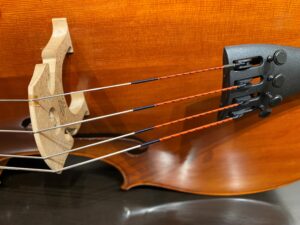As with nearly everything else in life, trends come and go. For as long as I’ve been playing cello, most professional-caliber instruments were set up with steel core strings. The tungsten-wound Spirocore strings from Thomastik were nearly ubiquitous for the G and C strings, and some flavor of Larsen A and D often accompanied them. On many cellos this combination sounded wonderful, with a clear and powerful lower register and a warm and singing upper register. This was especially true when playing LOUDLY…something most of us were taught to aspire to. Power and projection seemed to be of foremost concern to many players.
I’m not suggesting the trend of sounding loud, bright, and clear is going away – there are many players for whom those qualities will remain the most important. These days, I find myself playing primarily for my own enjoyment. I tend to play at home, and I tend to play solo repertoire like the Bach cello suites. I am increasingly drawn to a setup that produces a warm sound full of texture, along with quick and easy response. I first looked to lower-tension, synthetic core strings on my German cello. Much to my surprise, I found that Thomastik Dominant strings – out of fashion for decades on cello – not only sounded amazing on my cello, but were also a joy to play.
I recently tried a combination of Pirastro strings on my primary cello – Passione A (steel core) and Obligato D, G, and C (synthetic core). I am having a great time with these strings and they sound incredible on my cello! Ben recently set up a pair of Per Caso model cellos from Snow and we put a full set of Obligato strings on one of them. Again, a very different but very beautiful playing experience!
Is it time for you to give synthetic core strings a try?


Recent Comments